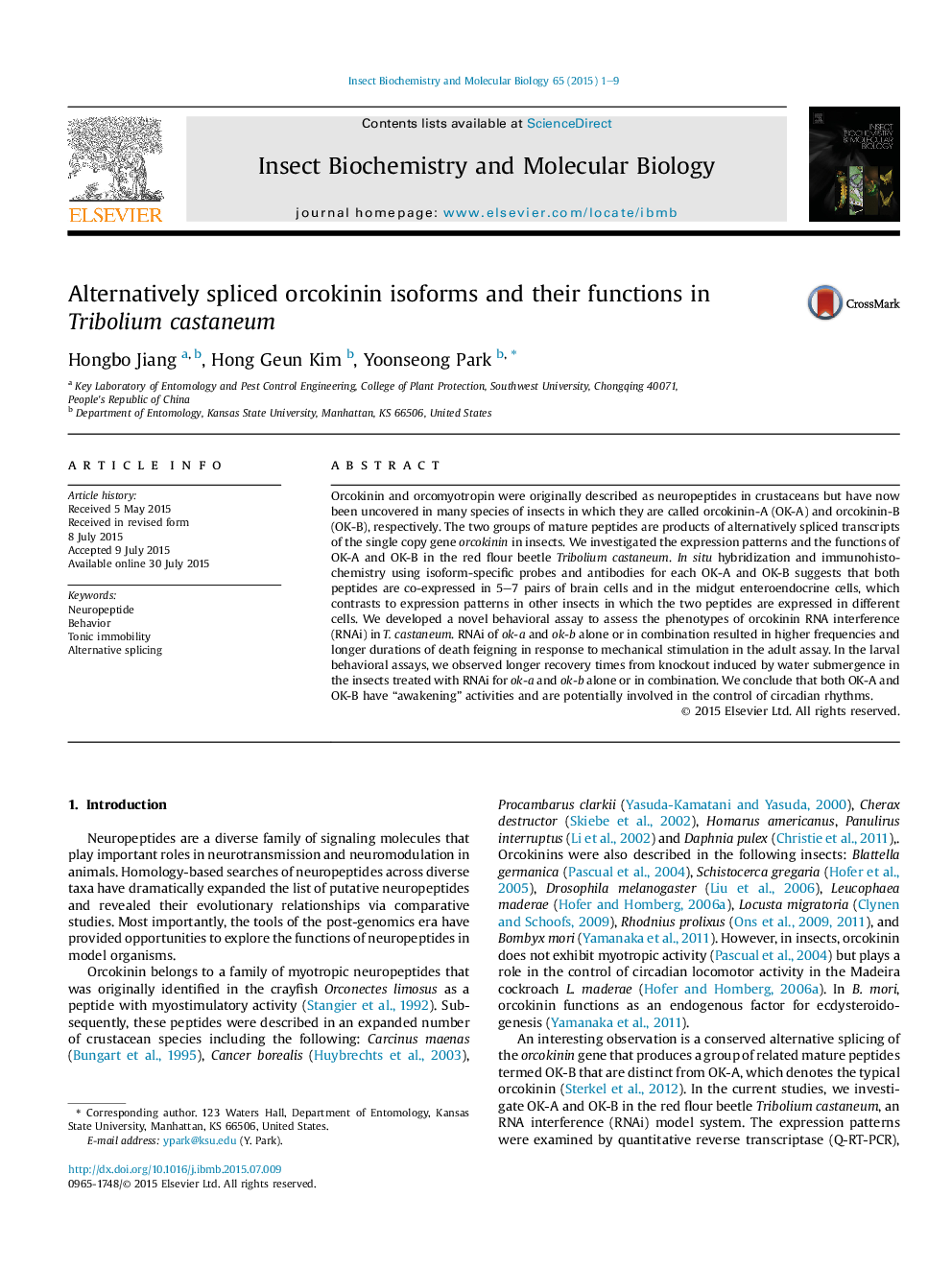| کد مقاله | کد نشریه | سال انتشار | مقاله انگلیسی | نسخه تمام متن |
|---|---|---|---|---|
| 1981972 | 1539487 | 2015 | 9 صفحه PDF | دانلود رایگان |

• Alternatively spliced isoforms of orcokinin, OK-A and OK-B, were identified in T. castaneum.
• Co-expression of OK-A and OK-B in the brain and midgut cells were revealed in this species.
• RNAi in conjunction with novel behavioral assays suggest “awakening” activity of orcokinins.
Orcokinin and orcomyotropin were originally described as neuropeptides in crustaceans but have now been uncovered in many species of insects in which they are called orcokinin-A (OK-A) and orcokinin-B (OK-B), respectively. The two groups of mature peptides are products of alternatively spliced transcripts of the single copy gene orcokinin in insects. We investigated the expression patterns and the functions of OK-A and OK-B in the red flour beetle Tribolium castaneum. In situ hybridization and immunohistochemistry using isoform-specific probes and antibodies for each OK-A and OK-B suggests that both peptides are co-expressed in 5–7 pairs of brain cells and in the midgut enteroendocrine cells, which contrasts to expression patterns in other insects in which the two peptides are expressed in different cells. We developed a novel behavioral assay to assess the phenotypes of orcokinin RNA interference (RNAi) in T. castaneum. RNAi of ok-a and ok-b alone or in combination resulted in higher frequencies and longer durations of death feigning in response to mechanical stimulation in the adult assay. In the larval behavioral assays, we observed longer recovery times from knockout induced by water submergence in the insects treated with RNAi for ok-a and ok-b alone or in combination. We conclude that both OK-A and OK-B have “awakening” activities and are potentially involved in the control of circadian rhythms.
Figure optionsDownload high-quality image (194 K)Download as PowerPoint slide
Journal: Insect Biochemistry and Molecular Biology - Volume 65, October 2015, Pages 1–9